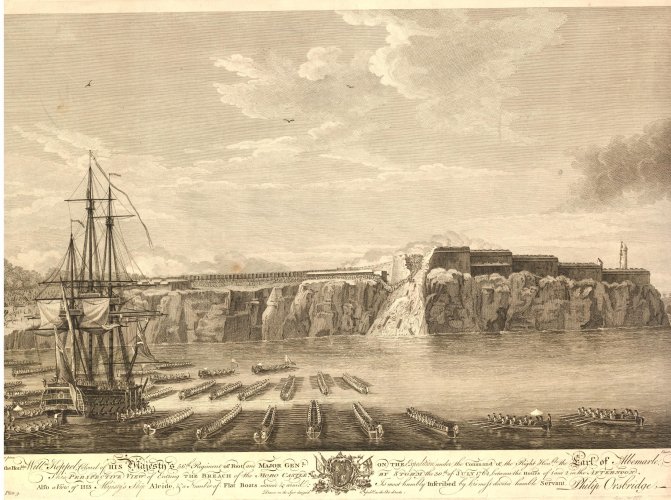In 1804/1805 Sir William Sidney Smith designed two catamaran landing craft
From Tom Pocock's 'The Terror Before Trafalgar: Nelson, Napoleon and the secret war'
But while infantry could scramble ashore from ships’ boats, they could do so only in small parties; also the landing of artillery was a problem. So he set about designing a new type of landing craft, far in advance of anything devised by the French. This was to be a large catamaran, its twin hulls joined by a platform with a ramp, which could be lowered for landing. The Admiralty was impressed and authorized the building of a prototype on the Thames. Smith’s sketches were developed into a catamaran with a platform twenty feet square, which underwent trials on the river between Greenwich and Chelsea, rowed by six men and rigged for sails. This proved a success and two larger versions were ordered, one forty-eight feet long and able to carry a field gun and fifty soldiers; the other, double that length and powered by eight oars on each side, sixteen paddles between the two hulls and gaff-rigged sails on either beam. Both were lined with cork for buoyancy and, when loaded, only drew eighteen inches of water. While these were under construction, the British frigates and brigs continued their patrols, cutting-out raids and reconnaissance along the enemy coast.
Has anyone seen anything more on these?
From Tom Pocock's 'The Terror Before Trafalgar: Nelson, Napoleon and the secret war'
But while infantry could scramble ashore from ships’ boats, they could do so only in small parties; also the landing of artillery was a problem. So he set about designing a new type of landing craft, far in advance of anything devised by the French. This was to be a large catamaran, its twin hulls joined by a platform with a ramp, which could be lowered for landing. The Admiralty was impressed and authorized the building of a prototype on the Thames. Smith’s sketches were developed into a catamaran with a platform twenty feet square, which underwent trials on the river between Greenwich and Chelsea, rowed by six men and rigged for sails. This proved a success and two larger versions were ordered, one forty-eight feet long and able to carry a field gun and fifty soldiers; the other, double that length and powered by eight oars on each side, sixteen paddles between the two hulls and gaff-rigged sails on either beam. Both were lined with cork for buoyancy and, when loaded, only drew eighteen inches of water. While these were under construction, the British frigates and brigs continued their patrols, cutting-out raids and reconnaissance along the enemy coast.
Has anyone seen anything more on these?

